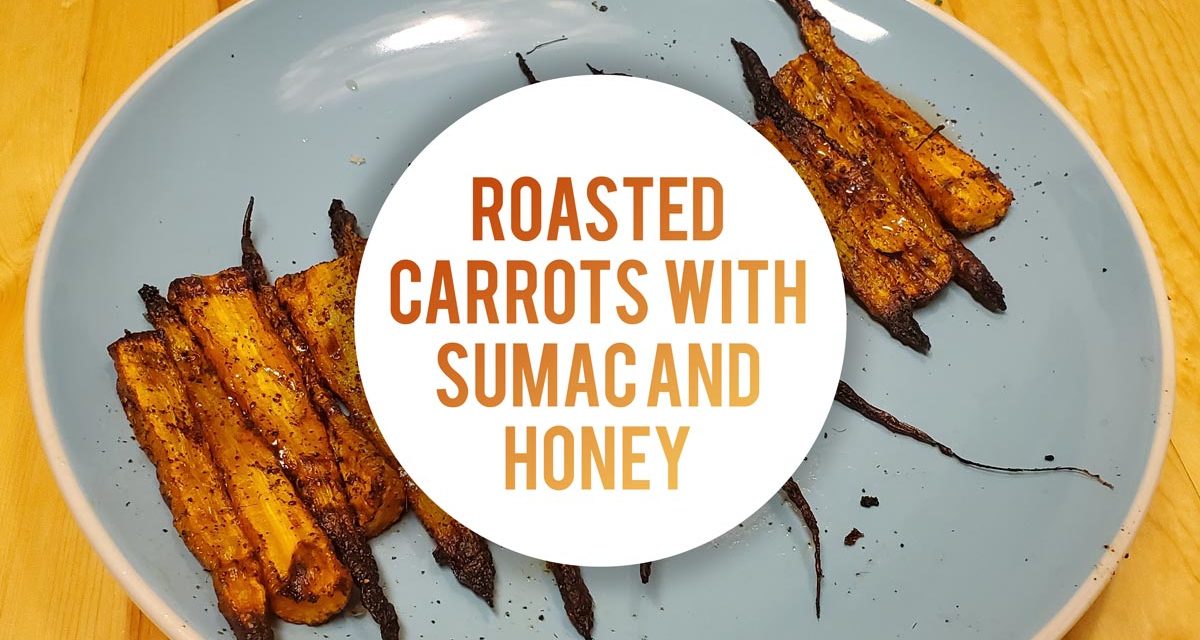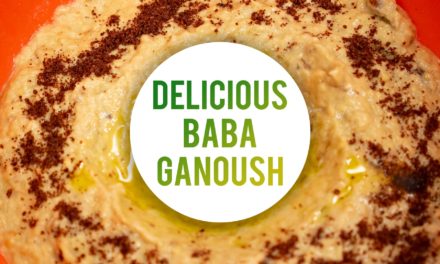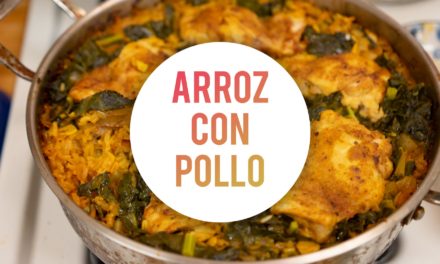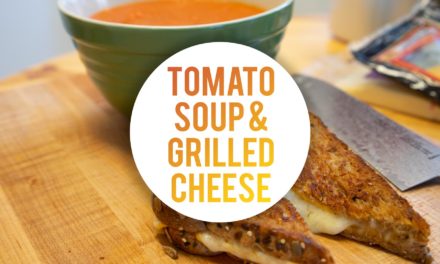Roasted carrots are an epiphany. These roasted carrots with sumac and honey play off of the natural sweetness of carrots. By roasting the carrots on a rack we use mostly convection heat which helps us in a couple of ways. The first way convection heat helps with these carrots is by enabling a more even cooking without all the fuss of turning the food over. You’ll see me use this technique for a lot of foods that are not flat(ish) on both sides. Let’s play out three different scenarios and how they might have effected the end result of these carrots. And for this we need to also think about the YumSizzle cooking formula! (dun dun dunnnn)
Heat (temperature, type) + Time = YumSizzle
1. Carrots are placed directly on the baking sheet.
In this scenario we place the split and seasoned carrots flat side down on the baking sheet. This is probably the most traditional way to roast carrots and there’s absolutely nothing wrong with it. This method of cooking would use conduction, which is when one hot surface (with lots of little molecules running around) comes in contact with a different surface (where the molecules are napping). The molecules on the hot surface jolt the relatively placid molecules on the cooler surface ‘awake’ and transfer some of their energy onto the cooler surface. This is what’s happening when you place a steak into a hot pan, or destroy the roof of your mouth with a slice of pizza. Conducted heat cooking is the most efficient way to transfer heat, but it might not always be the best solution for the outcome you’re looking for.
In this instance the side of the carrots placed face down on the pan would be getting a whoooole bunch more heat than the opposite side. This is because the metal of the pan is a much better heat conductor than the air in the oven. That means the bottom side will cook faster than the top, we can fix this by flipping over the carrots mid-way or 2/3rds of the way through cooking, but then we run into a different issue…carrots are round!! Using this method there’s no way to get the whole carrot roasted evenly. We would get some hot spots with browning and other spots with barely any browning. In the end we would get a perfectly delicious carrot, but it isn’t the carrot we’re set out to get in the beginning.
2. Carrots are cooked in a pan.
In the second scenario we try to cook the carrots in a pan. We season the carrots and place them flat side down in a pan on medium low heat with a little oil in the bottom. The carrots start to sizzle and everything seems to be going well, but there’s a problem. The bottom of the carrots are cooking much too fast, and the top of the carrots are cooking too slowly (if at all). What’s happening here is the heat from the pan (conduction) is doing an amazing job hitting the bottom of the carrots, but the heat is moving slowly through the carrot. Eventually that heat will make it all the way through to the other side, but carrots aren’t the best conductor of heat….so it’s going to take a while.
We can try to solve for this inequality of heat distribution by adding in some convection heat in the form of steam. Lovely lovely steam. Water happens to be a fairly good conductor of heat, so by putting a lid on the pan (and adding in a tiny but of water) we can create a convection setting where the heat from the steam is connecting with the portion of the carrot not on the pan and in turn cooking it. Unfortunately moisture is the enemy of browning. By not only adding in moisture, but trapping the moisture trying to escape the carrot we destroy the possibility of getting that crisp crust we’re going for.
3. Carrots are placed face down on a rack on the baking sheet.
Now we’re getting somewhere. In this situation the carrots are places on a cooling rack (yep they’re good for more than just cooling) which is placed on the baking sheet. There are a couple of forces at play in this situation and we end up leveraging two (really three but one doesn’t count) heat types to our advantage. The first heat type we’re using is convection. As soon as the carrots are placed in the oven the outside skin will begin to cook. This is helped along a little by the olive oil we tossed the carrots in as well as the compounds present in the carrots skin. As the outside of the carrot begins to change and form a crust, the heat slowly moves in through the carrot starting to cook the inside. As this is happening our second heat type comes in to play.
If you were paying attention you might have considered that the baking sheet we placed the cooling rack on top of was relatively cool (room temperature) when we placed it in the oven. As time moves on in the oven and the skin forms and crisps around the carrot the baking sheet heats up and becomes a secondary heat source providing radiant heat to the flat face of the carrots. This is great! Becuase the round side of the carrots has the skin still on they crisp up easier with the convection heat than the underside, the boost of heat from the hot baking sheet will help the flat side of the carrots heat up and brown. We’re left with a carrot that’s evenly crisp around the outside, but soft and fluffy in the middle. Exactly what we wanted.
The Final Formula
Heat (375°F, Convection and Conduction) + 45 mins. = YumSizzle
What we’re left with in the end are some gorgeous roasted carrots. Sure you could have just gotten a bag of frozen carrots and stuck them in the microwave… but what’s the fun in that?!
Serve it with:
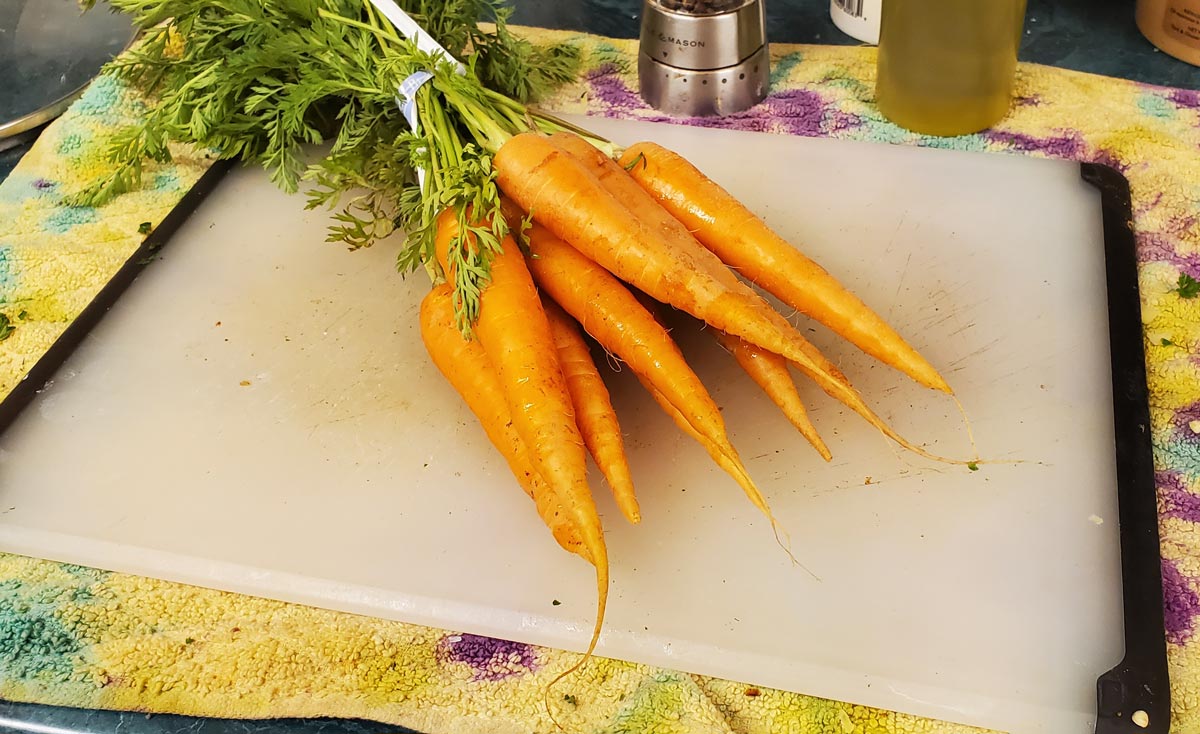
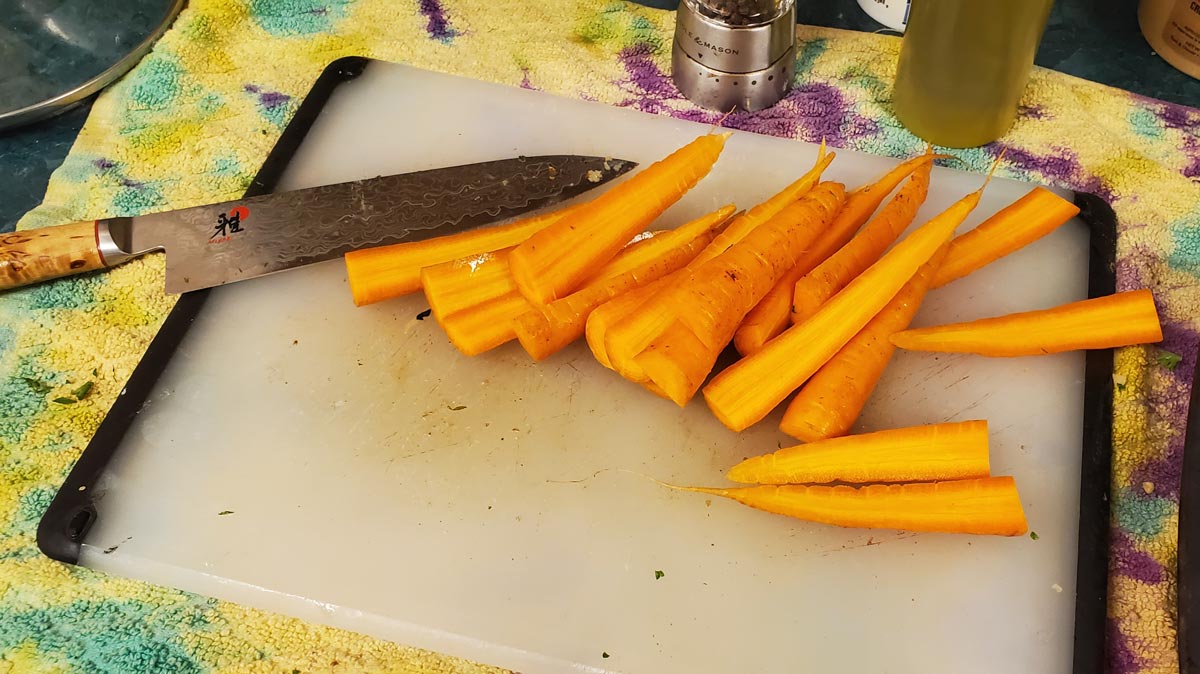
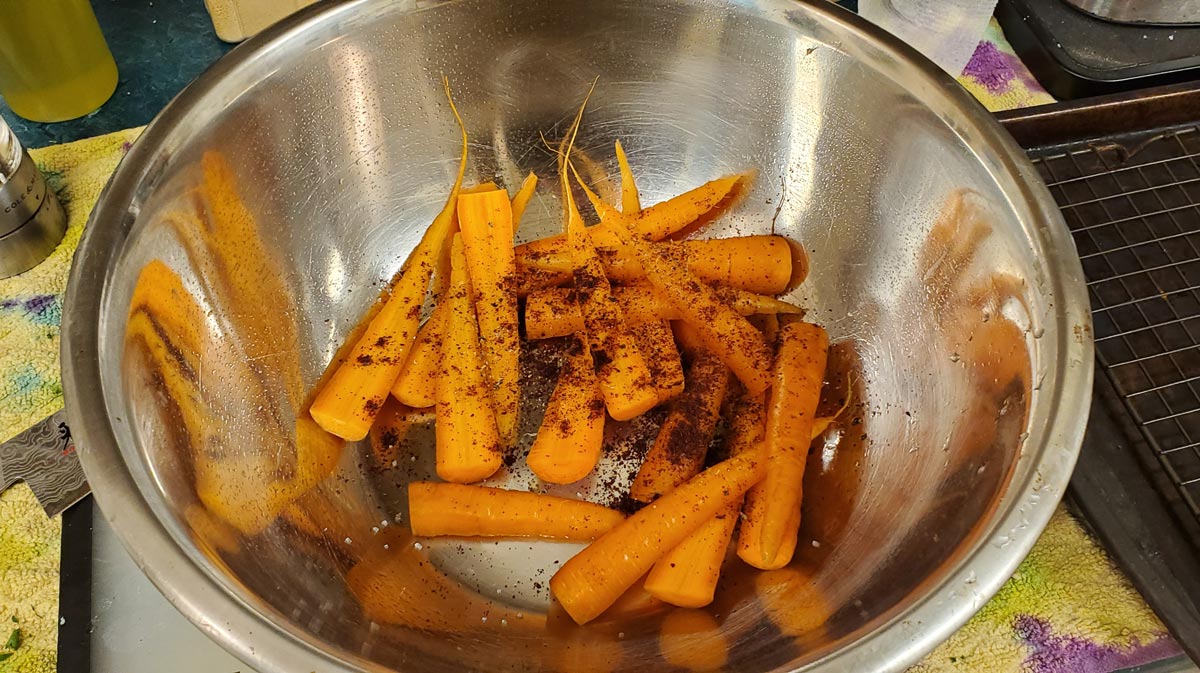
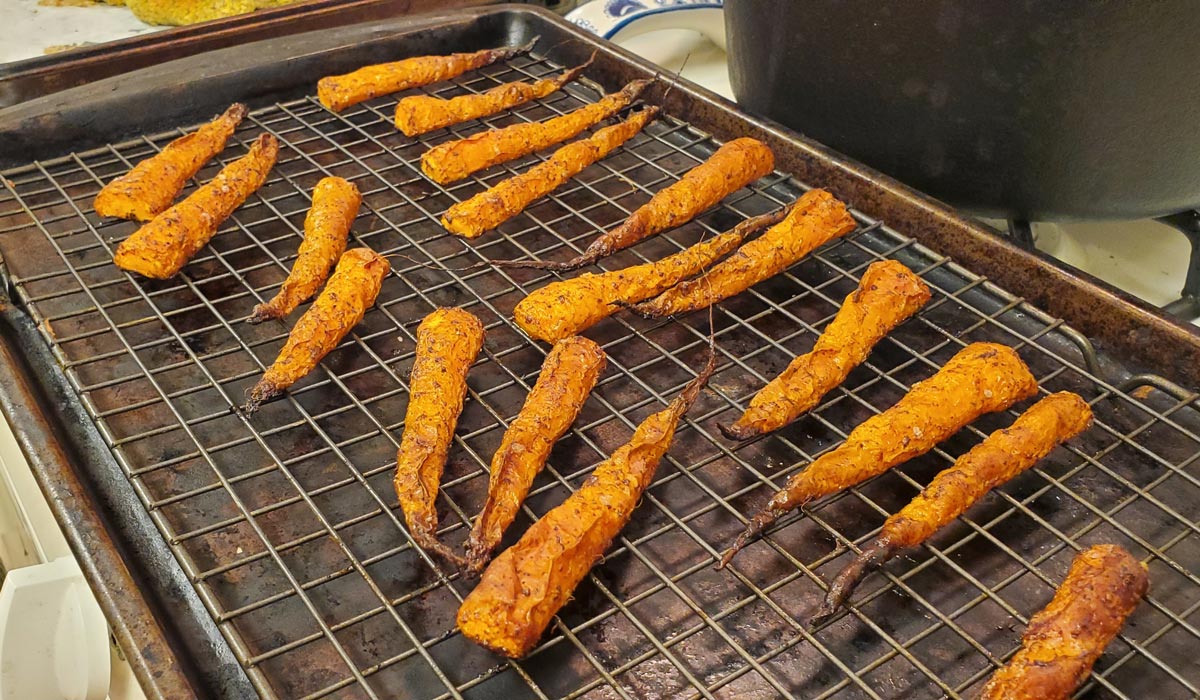
Roasted Carrots With Sumac and Honey
Equipment
- Baking Sheet
- Wire Cooling Rack
- Bowl
- Cutting Board
- Knife
Ingredients
- 1 bundle Small carrots Could be any kind of carrot you will just have to adjust the way you cut them to get the size pieces you want.
- 1/2 tbsp Extra Virgin Olive Oil
- 1/4 tsp Salt
- 1/4 tsp Fresh Black Pepper
- 1/2 tbdp Dried Sumac
- 3/4 tbsp Honey
Instructions
- Preheat oven to 375°
- Cut the tops of the carrots and discard the greens.
- Rinse the carrots thoroughly but do not peel them.
- Carefully cut the carrots lengthwise and place them in a large bowl.
- Toss the carrots with the olive oil, sumac, salt, and pepper.
- Place the carrots flat side down on the cooling rack which should be placed on the baking sheet. Pop those bad boys in the preheated oven on the middle or top rack.
- After 40 minutes check the carrots for done-ness. They should be fork tender and nice and crisp on edges. Give them a couple more minutes if you want them extra crispy like me! Enjoy!

